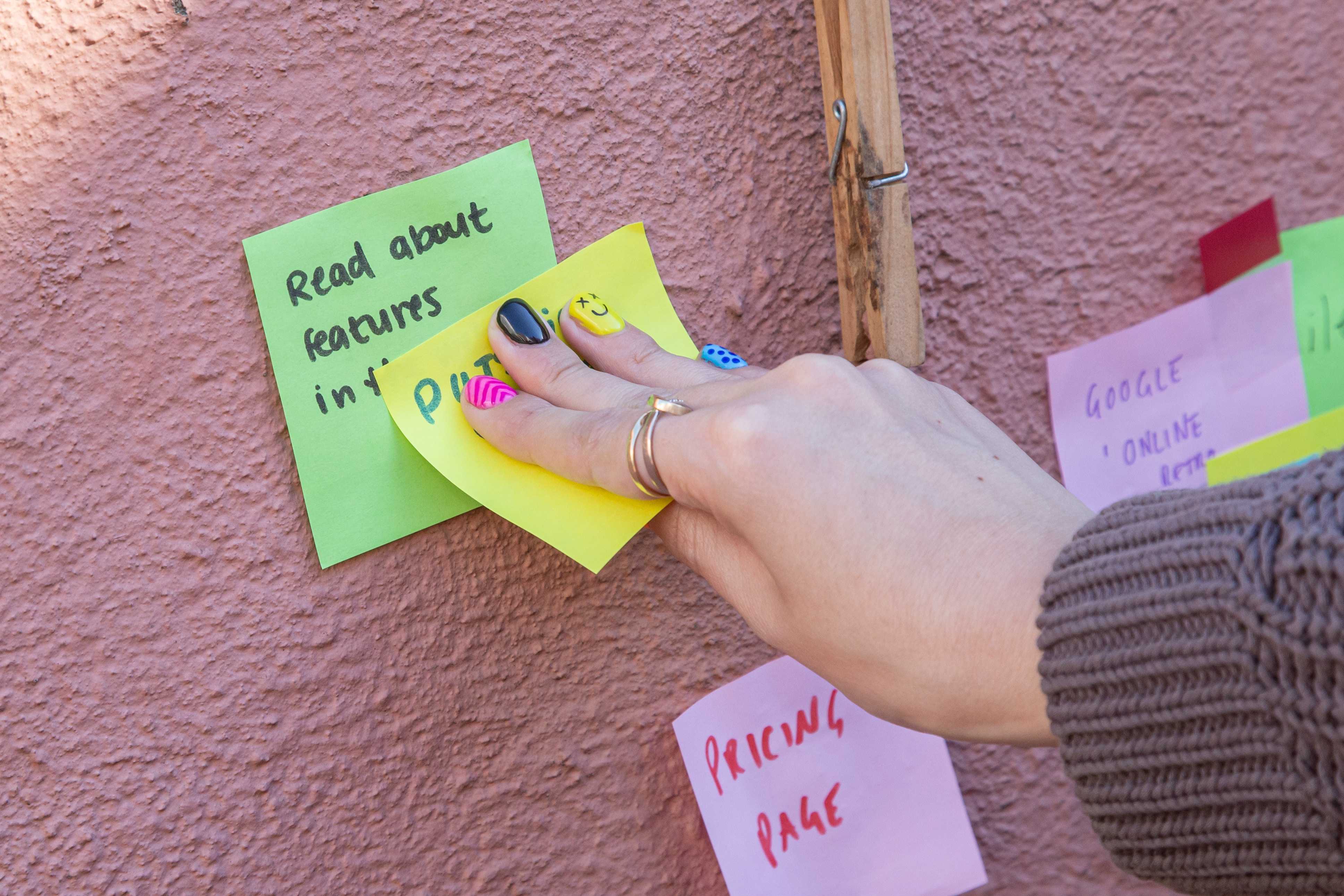
September 17, 2023

Around the end of last year I had a serious problem: I procrastinated, a lot. Convinced that productivity was going to be my salvation, I started hunting:
But my obsession quickly lost steam when I got struck by the idea that all these resources had one thing in common. You need one simple thing to be successful, time-efficient, and get high-quality outcomes. You need to sit down for five minutes and write out what you really want.
In this blog, I share how this 5-minute-rule has helped me make better decisions. I've become way more confident and also a better researcher. This rule is my bedrock for anything taking more than one step to complete. From large-scale projects to small tasks. I will explain how you can harness its power, too.
So, what is this rule? The 5-minute rule is a strategy you can use any time you need to make a decision about what to do next. It's as simple as this: when I need to decide on a next step, I make the conscious decision to stop and write out what I want. Writing is the key here, otherwise what's the difference with worrying? Then, I take a few minutes to answer the following questions:
This is a very minimal but surprisingly complete approach to planning. Question 1. gets your goal straight. Question 2 helps clear your head and gives you something to work from. Write down anything that comes to mind. Do not worry about order or completeness; trust the process! Question 3 ensures you're ready to stop planning and start doing!
Let's dive into a few real-life examples.
I was making a figure for a paper a few weeks ago. I used the five-minute rule to make concrete what I wanted. Question 2 answered exactly which parts the diagram needed -- before even touching the illustration software! Later on, I used the same approach to address my supervisors' feedback. Within a few minutes, I knew what parts needed to change and how. A few minutes of writing saved hours of illustrating elements to be thrown out later.
The five-minute-rule also helped me write this blog! At first, I meant to write about a completely different topic: organising workshops. Question 2 made me realise that my idea was three blog ideas:
Obviously, the five-minute rule would have to come first. Just the action of writing down possible actions made it clear what I needed to do and in what order.
I also use the five-minute rule for smaller tasks, like categorising papers. I categorise based on relevance to the topic of the survey I'm writing. Last week, I was reading a satellite image classification paper that didn't particularly inspire me. The paper used a very common Neural Architecture Search (NAS) technique. Search a network based on a smaller proxy dataset (like CIFAR10) to save computing time. Then, transfer the resulting network to your larger target dataset (like ImageNet). I wanted to put it in the "not very interesting" category -- there just wasn't much to say about this standard approach.
But writing this down sparked ideas. Most satellite image datasets are actually pretty small, so it's rare that a dataset is way too large to train a NAS system on. Well, the questions this paper raised definitely migrated it into the "interesting" category. Another paper saved from the trash! If I had rushed this decision, I would have missed out on important insights. Writing down my thoughts helped me make better decisions by forcing me to critically consider my arguments.
Answering three short questions has saved me time, improved my writing, and taught me to think more critically. Most important of all, I've overcome much of my procrastination! So often, the answer to Question 3 flows straight out of answering Question 2. Deciding on the next action became easy, even exciting, because I felt purposeful. Instead of worrying about what to do, I now had a clear action plan in my head and confidence in the outcome in my pocket.
There's one caveat. You have to notice when to use the rule in the first place. You need to keep your metaphorical ears open. Any time you're worrying about a decision or feeling indecisive, it's time. Noticing these opportunities is like training a muscle—practice, practice, practice! Honestly, I thought this part was fun. It feels really, really good to find those worries and act on them before they become a large energy drain.
While reading this blog, you must have thought about it. That problem you're stuck on. Or the project you've been putting off. It doesn't matter whether it's your next research project, or choosing a paper to read: take out your pen and start brainstorming. The five-minute rule will help you get ahead.